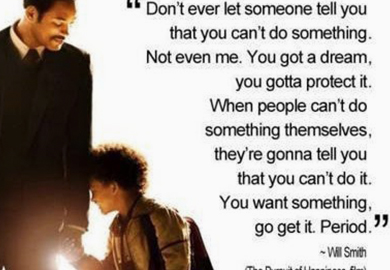Reading & Writing Assignment (4) – Crossing the Chasm
By now, we hope, you have understood how reading and writing can do wonders for your English. We are sure you are as eager for the 4th assignment as we are. Let’s get started.
What will you do in this assignment? – You would read about an interesting concept, watch a clip on it, and then answer a question based on what you read and saw. Ready?
Today’s situation (source)
‘Crossing the Chasm (pronounced as ‘kasm’)’ is a popular marketing theory proposed by Geoffrey A Moore in 1991 in a book by a similar name. It describes how the markets are created for new technologies. Whenever a new technology enters the market, there are a few people who start using it very soon – these are called early adopters and they do so not necessarily because the new technology is superior but more because by nature these people are more experimental and willing to try new stuff.
While these early users or customers are essentials for a new business (since they spread the word of mouth), they do not result in a significant (or any) profit. The vast majority of the population is made up of people who are pragmatists (realists) or conservatives who are hesitant to change their current habits and reluctant to explore a new way of doing things. But they would switch their behavior if they see a large number of people around them now moving to the new technology because they do not want to be left out. As you can imagine, since this is the segment where most of the people fall in, this is also the segment where maximum profit for a business exists. For a new business to succeed, it has to cross the gap (or chasm) that exists between the niche (small) market of early adopters and the mainstream market of pragmatists. At the other end of the extreme are ‘skeptics’ – people who would never switch and continue to stick to old ways of doing things.
If you think deeply enough, there are sufficient examples of this human behavior playing out in front of our eyes almost every single day. Whenever there is something new, people initially reject it or show no interest, but gradually it picks up. Think of e-commerce in India- initially, no one thought that people would be comfortable paying online and very few did, but over the years that has become a very natural way of shopping for people (especially in cities). Same goes for the adoption of app-based cab services (some section of the society is still fighting it but gradually people are getting accustomed to them).
Let’s watch a video clip and see a very interesting example of this behavior being demonstrated at a music festival (of all the places you can imagine!).
Question for you– Describe a situation in your life when you took an initiative and started something. How was your overall experience and what did you learn (min. 250 words). Your experience need not have followed the same trajectory as described in the video, so don’t worry about that. As long as you have a story of taking an initiative in your life, share that. And if you don’t have a story from your life, you can share someone else’s (friends, family etc.) story too.
You can also read fellow students’ answers in comments (but do so only after you have submitted your own answer so that you don’t get influenced by what others wrote). We also encourage you to share your feedback, appreciation, and thoughts against others’ answers. Remember, it is a community effort and we are all in it together :). Only when you participate, you can expect others to participate and share feedback on what you wrote. Deal?
To read the next article of the series, on the usage of direct and indirect speech, click on the next button below. To go back to the earlier article, click on the previous button.





